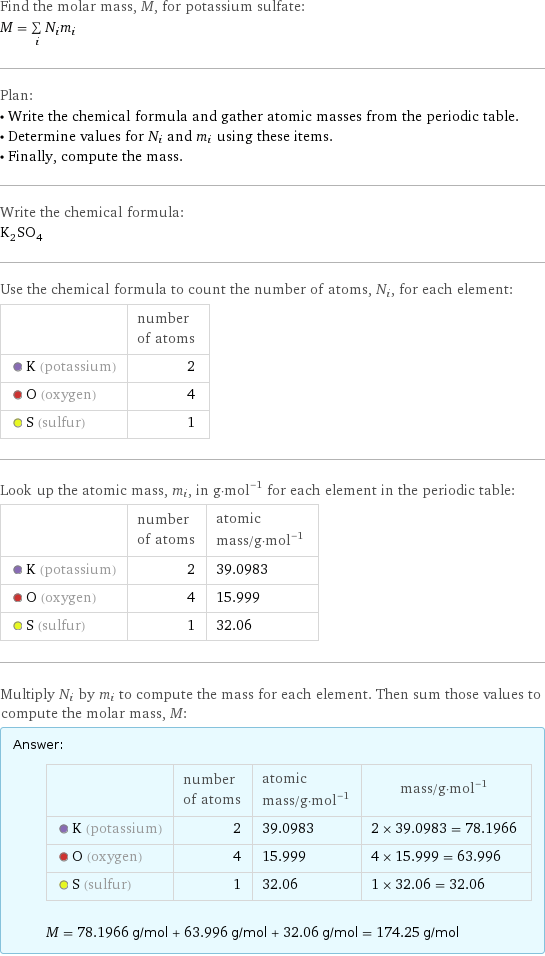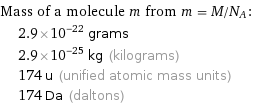Input interpretation

potassium sulfate | molar mass
Result

Find the molar mass, M, for potassium sulfate: M = sum _iN_im_i Plan: • Write the chemical formula and gather atomic masses from the periodic table. • Determine values for N_i and m_i using these items. • Finally, compute the mass. Write the chemical formula: K_2SO_4 Use the chemical formula to count the number of atoms, N_i, for each element: | number of atoms K (potassium) | 2 O (oxygen) | 4 S (sulfur) | 1 Look up the atomic mass, m_i, in g·mol^(-1) for each element in the periodic table: | number of atoms | atomic mass/g·mol^(-1) K (potassium) | 2 | 39.0983 O (oxygen) | 4 | 15.999 S (sulfur) | 1 | 32.06 Multiply N_i by m_i to compute the mass for each element. Then sum those values to compute the molar mass, M: Answer: | | | number of atoms | atomic mass/g·mol^(-1) | mass/g·mol^(-1) K (potassium) | 2 | 39.0983 | 2 × 39.0983 = 78.1966 O (oxygen) | 4 | 15.999 | 4 × 15.999 = 63.996 S (sulfur) | 1 | 32.06 | 1 × 32.06 = 32.06 M = 78.1966 g/mol + 63.996 g/mol + 32.06 g/mol = 174.25 g/mol
Unit conversion

0.17425 kg/mol (kilograms per mole)
Comparisons

≈ ( 0.24 ≈ 1/4 ) × molar mass of fullerene (≈ 721 g/mol )

≈ 0.9 × molar mass of caffeine (≈ 194 g/mol )

≈ 3 × molar mass of sodium chloride (≈ 58 g/mol )
Corresponding quantities

Mass of a molecule m from m = M/N_A: | 2.9×10^-22 grams | 2.9×10^-25 kg (kilograms) | 174 u (unified atomic mass units) | 174 Da (daltons)

Relative molecular mass M_r from M_r = M_u/M: | 174